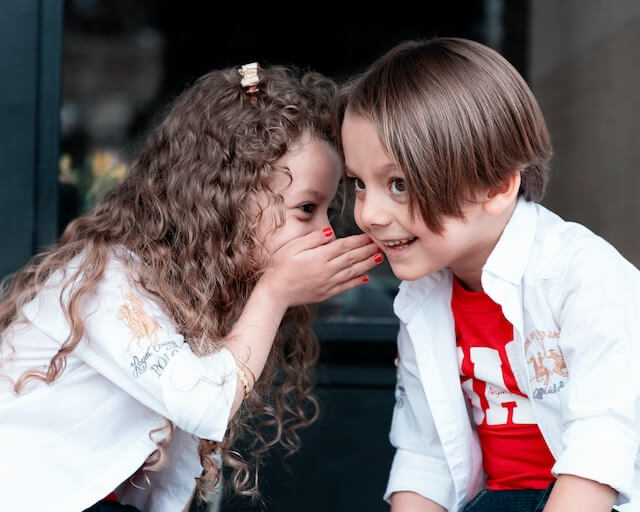If you have a child with non-verbal autism spectrum disorder (ASD), you understand the difficulty of connecting with them. An estimated 30% of children with autism struggle to communicate through speech, so finding the right toys to foster a connection is important. Keep reading to learn how!
What Are Sensory Issues?
If your child is living with nonverbal autism, they may experience a range of sensory issues. These issues can be broken down into two categories: hypo-sensitivity and hypersensitivity.
Hypo-sensitivity is when your child does not seem to notice or pay attention to certain sensations. This can make them less aware of their surroundings, and they may even seek out sensory experiences as a way to stimulate themselves.
Examples of hypo-sensitivities include:
- Not reacting to loud noises like other children do
- Not being bothered by clothing tags or seams in socks
- Enjoying deep pressure, such as getting massages or squeezing objects
On the other hand, hypersensitivity occurs when your child becomes overwhelmed by certain sensations that others consider normal, which can lead to a meltdown.
Examples of hypersensitivities include:
- Becoming alarmed at loud noises like sirens or fireworks
- Avoiding certain fabrics or feeling uncomfortable when wearing clothing tags
- Reacting negatively to deep pressure, such as getting hugs from people they don’t know well
As you can see, these sensitivities affect sight, touch, taste, sounds, balance, smells, and even body awareness. The good news is the right sensory toy can help your child better cope with these sensitivities. Let’s examine how.
How do Sensory Toys Help Autism?
Gadgets and games that engage the senses are an important part of helping children with autism learn and grow. These toys provide tactile stimulation that helps kids explore their environment and interact with others in meaningful ways.
Through playing with these toys, children are encouraged to plan ahead, negotiate and share. As they explore the different textures and sounds of the plaything, their brains become more attuned to their surroundings and those around them.
This helps them better understand facial expressions, body language, and other forms of communication – all essential for developing social skills.
Sensory play can also help your child focus on the task at hand by providing input through sound, sight, or touch that is calming for them. Additionally, it allows your child to practice motor skills like grasping items or manipulating objects, which can help with their development.
No matter what type of toy you choose for your child, it’s important to look for ones specifically designed to meet the needs of those on the autism spectrum. So how do they work? We’re glad you asked.
How are Sensory Toys Used for Autism?
Sensory toys stimulate the body and give it feedback which helps the brain better understand itself. This is particularly beneficial for those with ASD as it helps them focus, relax, and calm down.
There are different types of gadgets to choose from that target specific senses such as sight, sound, touch, or taste-smell. Many of these games are designed to be combined with others to maximize the sensory experience.
However, it is important to note that while sensory toys can be helpful for children with autism, they do not replace formal and evidence-based treatment strategies.
The following popular sensory toys and aids should be used as an additional strategy in conjunction with other therapies, such as applied behavioral analysis (ABA), speech-language therapy, occupational therapy, etc.
Ultimately these tried-and-true gadgets help create more positive outcomes for those on the autism spectrum.
The 10 Best Sensory Toys for Autism
Let’s examine some of the most popular gadgets for children with non-verbal autism:
Sensory Mats
Sensory mats are an excellent option for those with nonverbal autism, as they provide a tactile experience and encourage exploration. They come in different sizes, shapes, and textures that can match the individual’s sensory preferences.
For example, some mats may have ridged surfaces for children to run their hands over or soft fabrics to practice motor skills like grasping or pushing. These mats also offer plenty of opportunities for imaginative play since each texture can be used differently depending on the activity being done.
Chew Toys
Chew toys can be comfortable and calming to use, as they’re made of non-toxic silicone material, which is gentle on the skin. Chew toys come in many sizes and shapes, from hand-held items to jewelry-like pieces that you wear around your neck or wrist.
Furthermore, chew toys also have different textures – from bumps and ridges to patterns or smooth surfaces – so you can find something that fits your needs perfectly. Plus, these chew toys help reduce anxiety by giving users something tangible to focus their attention on when feeling overwhelmed.
Sand, Slime, or Putty
These seemingly messy choices are fantastic options that allow your child to play while developing their fine motor skills. Plus, these substances often come in bright and bold colors which can be visually stimulating and appealing to them.
Each of these toys has distinct characteristics:
- Sand is a classic toy with versatile uses; you can pour it out on a table or tray and have your child explore its texture and movement.
- Slime is another popular option with its gooey consistency that requires squeezing and stretching as they manipulate it with their hands.
- Putty also has similar qualities but provides more resistance when molding shapes and forms.
All of these toys provide tactile stimulation, helping to engage your child in a fun way while still providing therapeutic benefits.
Pin Art
Pin art is an entertaining and engaging toy that helps children with non-verbal autism practice expressing themselves. This toy is made up of hundreds of tiny pins connected to a board, and when pressed against the surface, they create 3D shapes.
Here are some ways pin art can help children with nonverbal autism:
- Develops hand-eye coordination
- Encourages creative thinking
- Teaches cause-and-effect relations
- Improves fine motor skills
- Helps with decision making
- Improves concentration
Pin art is an engaging and entertaining toy that can provide hours of fun while also helping them build essential skills they need to thrive.
Rainmakers
The gentle sound of the rainmaker is like a soothing lullaby, which can be incredibly helpful in helping ease anxiety and stress. Rainmakers come in different colors, shapes, and sizes, which will surely spark your child’s interest.
Benefits of using a rainmaker:
- Provides sensory stimulation through sound
- The calming effect helps reduce anxiety
- Helps improve concentration levels by providing background noise
- Aids in relaxation and promotes self-expression
- Enhances auditory skills, such as tracking and sound discrimination
- Teaches cause-and-effect relationships
- Promotes imaginative play
- Improves motor skills by encouraging hand-eye coordination
- Encourages creative exploration and discovery
Rainmakers are fun toys that make great gifts for any child on the autism spectrum, verbal and non-verbal alike.
Fidget Spinners
Fidget spinners are an excellent toy for non-verbal children on the spectrum. Benefits of fidget spinners include:
- Providing tactile stimulation. Kids on the autism spectrum have sensory issues and often seek activities that provide tactile input, such as spinning objects or squeezing items. Fidget spinners can offer this type of sensory feedback safely.
- Keeping hands occupied. As mentioned above, fidget spinners can keep the child’s hands busy, which can help them focus and stay calm.
- Improving fine motor skills. Fidget spinners can also help improve a child’s fine motor skills. This is important for children with ASD who often struggle in this area.
- Improving coordination. Hand-eye coordination, in particular, can be beneficial for kids with ASD.
- Reducing stress – by providing a calming and soothing activity.
Fidget spinners provide tactile input, help keep hands occupied, and improve fine motor skills and coordination while reducing stress.
Electric Dog Pet
This toy is designed to help children with autism desensitize themselves to everyday noises from home appliances and pets. The toy has a realistic feel, complete with fur and plastic ears that move when its noise-inducing button is pressed.
When the button is pushed, it plays a variety of sounds like barking and growling, which can be calming for children on the spectrum who may otherwise struggle with these types of noises.
Senseez Vibrating Cushion
This soft cushion features built-in vibrations that can be activated with a simple press of a button. The gentle motion and sound it creates help your child relax while also stimulating their senses in an enjoyable way.
It’s perfect for soothing meltdowns or providing extra comfort when needed. Plus, it’s lightweight and portable so you can take it anywhere.
Body Sox
These colorful, see-through and breathable lycra socks provide a calming experience that helps to reduce anxiety. By putting themselves into one of these unique socks, kids can use their sense of touch to relax and feel safe.
The pressure the sock creates is enough to be comforting without feeling too restrictive. For many children on the spectrum, this kind of tactile stimulation has been found to help them feel more relaxed and better able to focus on tasks or conversations.
Reflective Balls
Reflective balls, such as those made with shiny mirrors or colorful lights, are an excellent choice when it comes to toys for autism. They help children with nonverbal autism develop a visual sense by giving them something they can interact and engage with.
The reflective surfaces of the balls draw attention and encourage exploration through play, allowing children to explore their environment safely.
Conclusion
Finding the right activities for children with nonverbal autism can be a challenge. With the proper sensory toys, however, kids on the spectrum can find joy and comfort in their environment while also developing the life skills they need to thrive.
Remember: talk to your child’s doctor or therapist before selecting any toys, as they may have additional recommendations based on your specific situation.
So take some time to explore the best options out there – you’re sure to find something special that will make your child smile.
If you are ready to work with the best ABA therapy provider in New York, New Jersey or Indiana, give us a call at (732) 402-0297. Our dedicated team is ready to help and we will treat you like family.










